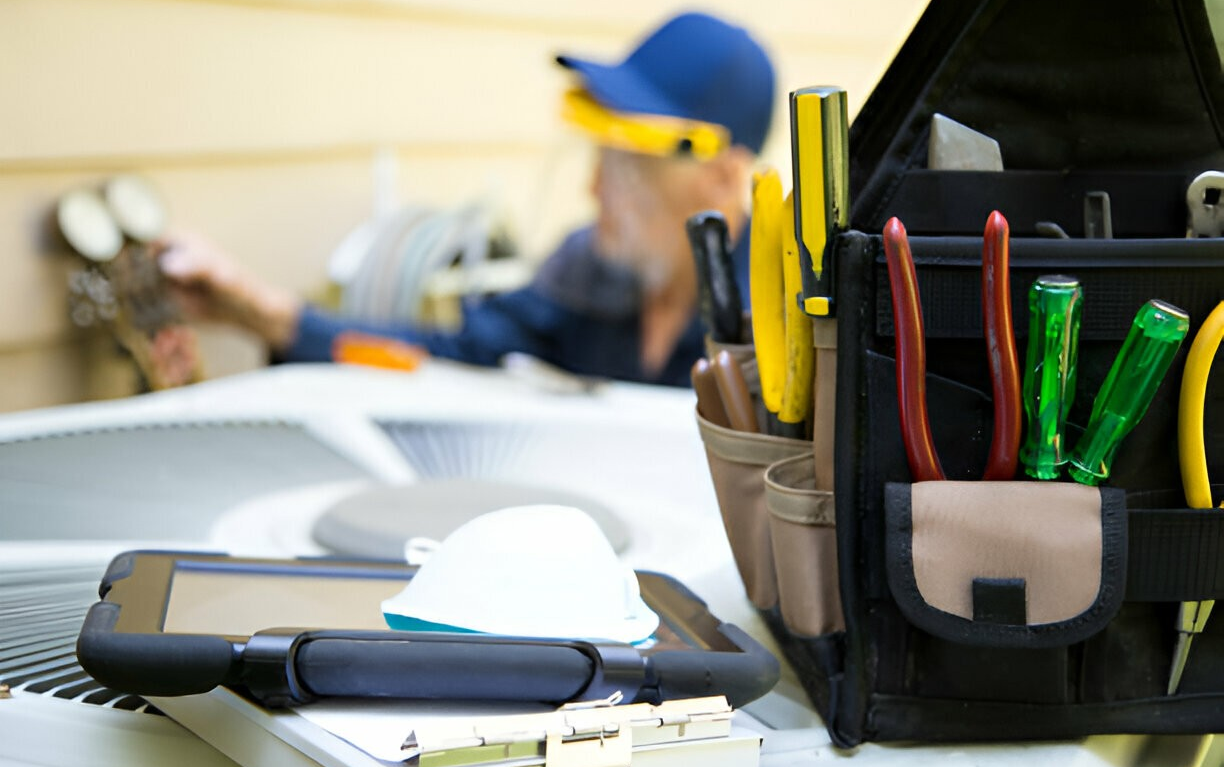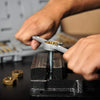
Top 10 Air Conditioning Repair Tools for Beginners
The intricacies of air conditioning repair can seem daunting to those newly introduced to the field of DIY tool hardware, particularly when navigating the vast landscape of hardware shop retail and global manufacturing. The right tools not only facilitate a smoother repair process but also enhance understanding and efficiency, offering beginners a solid foundation in their skill-building journey.
This article aims to demystify the Essential Air Conditioning Repair Toolkit Guide for beginners, providing a comprehensive guide to the top 10 tools that are indispensable for anyone looking to undertake air conditioning repairs. Through an exploration of these tools, readers will gain insights into their functionality, application, and the critical role they play in the global manufacturing and retail landscape of DIY tool hardware.
1. Multimeter
The Multimeter stands as the cornerstone of any air conditioning repair toolkit. Essential for diagnosing electrical issues, this versatile instrument measures voltage, current, and resistance, allowing technicians to ascertain the health of electrical components within the air conditioning unit.
- Understanding Measurements: Learn how to interpret readings for AC and DC currents, resistance levels, and continuity tests, which can indicate potential faults or confirm operational integrity.
- Selecting the Right Multimeter: A guide to choosing between analog and digital models based on accuracy, ease of use, and additional features such as auto-ranging.
- Safety First: Instructions on safe multimeter use, including proper selection of measurement settings, the significance of fuse ratings, and the importance of insulated gloves.
2. Refrigerant Gauges
Refrigerant gauges enable technicians to monitor the pressure within air conditioning systems, a crucial factor in their operation and efficiency. Understanding these readings is vital for diagnosing issues such as refrigerant leaks or compressor malfunctions.
- Reading Pressure Gauges: An explanation of high-side and low-side pressures, what they indicate about an AC system's health, and troubleshooting tips based on various pressure readings.
- Choosing Refrigerant Gauges: Insights on the different types of gauges, including analog and digital, and recommendations based on precision, durability, and ease of interpretation.
- Maintenance and Calibration: Steps for maintaining accuracy through regular calibration, cleaning, and storage practices to ensure longevity and reliability.
3. Screwdrivers and Wrenches
A set of screwdrivers and wrenches is indispensable for opening panels, adjusting components, and securing connections within air conditioning units. Their utility spans across various tasks, making them a must-have in any toolkit.
- Types and Sizes: An overview of essential types and sizes, from flathead and Phillips screwdrivers to adjustable wrenches and hex keys, tailored to the needs of air conditioning repair.
- Usage Tips: Best practices for using screwdrivers and wrenches to avoid stripping screws, ensuring tight connections, and preventing damage to components.
- Care and Maintenance: Recommendations for keeping these tools in optimal condition, including proper cleaning, storage, and the importance of rust prevention.
4. Vacuum Pump
A vacuum pump is a critical tool for ensuring the removal of moisture and air from refrigeration lines, a necessary step before charging the system with refrigerant. This process prevents potential damage and ensures the system operates efficiently.
- Selecting a Vacuum Pump: Factors to consider, including pump capacity, power source, and portability, to match the specific requirements of air conditioning repair tasks.
- Operating Procedures: Step-by-step guide to achieving a proper vacuum, including connections, monitoring, and safety precautions to prevent contamination.
- Maintenance Practices: Tips for prolonging the life of your vacuum pump, including oil changes, filter replacements, and routine inspections for wear and tear.
5. Leak Detector
Identifying and repairing leaks in an air conditioning system are crucial for its efficiency and longevity. A leak detector helps technicians locate refrigerant leaks, which can lead to reduced cooling performance and environmental harm.
- Types of Leak Detectors: Comparison of electronic, ultrasonic, and dye-based leak detectors, discussing their pros and cons in various air conditioning repair scenarios.
- Using Leak Detectors Effectively: Techniques for thoroughly inspecting systems, interpreting signals, and pinpointing leaks with high accuracy.
- Maintenance and Calibration: Ensuring your leak detector remains sensitive and accurate through regular calibration, battery management, and sensor care.
6. Crimping Tools
Crimping tools are used to make secure connections between metal pieces without the need for welding or soldering. In air conditioning repair, they are often utilized to join wires or fasten metal fittings.
- Selecting Crimping Tools: Criteria for choosing the right crimping tool, including jaw size, handle length, and material compatibility.
- Proper Crimping Technique: Instructions on preparing the materials, positioning the tool, and executing a crimp that ensures a strong and reliable connection.
- Care and Maintenance: Advice on keeping crimping tools in top condition, including regular lubrication, alignment checks, and storage tips to prevent damage.
7. Pipe Cutter
A pipe cutter provides a clean and precise way to cut through refrigerant lines, an essential step in many repair and installation tasks. Its use facilitates quick modifications and helps maintain the integrity of the system.
- Choosing a Pipe Cutter: Factors to consider, such as cutter type (rotary vs. ratchet), blade quality, and size range, to accommodate different pipe materials and diameters.
- Cutting Techniques: Detailed instructions on making accurate cuts, avoiding burrs, and preparing pipes for joining or sealing.
- Maintenance Tips: Guidelines for extending the life of your pipe cutter, including blade replacement, rust prevention, and cleanliness.
8. Soldering Iron
A soldering iron is a key tool for creating durable connections between metal components, particularly in electrical wiring and circuit repair within air conditioning units.
- Selecting a Soldering Iron: Considerations include temperature control, tip shape, and wattage, aimed at enhancing precision and adaptability in various repair tasks.
- Soldering Basics: Fundamental techniques for preparing components, applying solder, and achieving strong, conductive joints while minimizing the risk of component damage.
- Care and Safety: Tips for soldering iron maintenance, including tip cleaning and replacement, as well as safety precautions to avoid burns and inhalation of fumes.
9. Flashlight
A high-quality flashlight is indispensable for illuminating dark, cramped spaces where air conditioning components are often situated, ensuring that repairs can be carried out with visibility and accuracy.
- Choosing a Flashlight: Attributes to consider, such as brightness levels, beam focus, and durability, tailored to the demands of air conditioning repair environments.
- Effective Use: Strategies for maximizing illumination while keeping both hands free for work, including the use of headlamps or magnetic bases.
- Maintenance: Essential care tips to ensure reliability, including battery management, waterproofing checks, and lens cleaning.
10. Safety Gear
Last but not least, personal safety gear is vital for protecting against potential hazards encountered during air conditioning repairs, including electrical shocks, refrigerant exposure, and physical injuries.
- Essential Safety Gear: Outlining the must-have items, such as insulated gloves, safety goggles, and respirators, customized to the risks present in air conditioning repair work.
- Proper Use and Fit: Guidance on selecting the right size and type of protective equipment to ensure effective protection without compromising on comfort or mobility.
- Maintenance and Replacement: Key considerations for keeping safety gear in optimal condition, including cleaning, storage, and recognizing signs that indicate the need for replacement.
Related Article: Innovative Technology in Air Conditioning Repair Tool Design
Empowering Your Air Conditioning Repair Journey
Arming yourself with the right tools is the first step toward mastering air conditioning repair. The comprehensive toolkit outlined above provides beginners with a solid foundation, enabling them to approach repairs with confidence and precision. Each tool plays a pivotal role in diagnosing, fixing, and optimizing air conditioning systems, underscoring the importance of quality, knowledge, and safety in this field. By investing time in learning about these tools and honing your skills, you position yourself to tackle a wide range of repair scenarios, ultimately enhancing your capabilities and expertise as a DIY enthusiast or professional technician.
Related Article: Air Conditioning Repair Toolkit: A Comprehensive Guide



